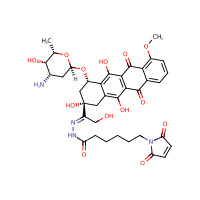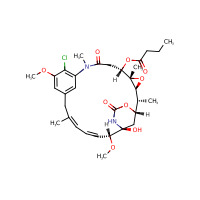ADC Cytotoxins,antibody-drug couples and Efficacy Assays
ADC cytotoxins are cytotoxic agents that induce the death of target cells in antibody drug couples (ADCs), which are targeted drugs consisting of monoclonal antibodies, connectors and cytotoxins. The cytotoxin is the most important component, as it determines the ability of ADCs to kill cancer cells.
Many cytotoxins are currently being used, such as galicin, doxorubicin, pyrrolobenzodiazepines (PBD), camptothecin, erythromycin/doxorubicin, Auristatins, and medensin. Based on their mechanism of action, they can be divided into two categories: DNA damaging agents and microtubulin inhibitors. Among them, galicin, doxorubicin and PBD are DNA grove-binding agents, and hippocrine and erythromycin/doxorubicin are topoisomerase inhibitors, which are DNA damaging agents. auristatins and maytansinoids are microtubule protein inhibitors. In addition to the listed cytotoxins, there are many traditional cytotoxic agents with similar mechanisms of killing cancer cells that can also be used in the development of ADCs.
ADC cytotoxins are cytotoxic agents that induce the death of target cells in antibody drug couples (ADCs), which are targeted drugs consisting of monoclonal antibodies, connectors and cytotoxins. The cytotoxin is the most important component, as it determines the ability of ADCs to kill cancer cells.
Many cytotoxins are currently being used, such as galicin, doxorubicin, pyrrolobenzodiazepines (PBD), camptothecin, erythromycin/doxorubicin, Auristatins, and medensin. Based on their mechanism of action, they can be divided into two categories: DNA damaging agents and microtubulin inhibitors. Among them, galicin, doxorubicin and PBD are DNA grove-binding agents, and hippocrine and erythromycin/doxorubicin are topoisomerase inhibitors, which are DNA damaging agents. auristatins and maytansinoids are microtubule protein inhibitors. In addition to the listed cytotoxins, there are many traditional cytotoxic agents with similar mechanisms of killing cancer cells that can also be used in the development of ADCs.

Antibody-drug couples or ADCs combine the selectivity of antibodies with the efficacy of small molecule drugs to enable more precise and targeted therapeutic applications. Over the past two decades, researchers have also explored opportunities to develop ADCs into disease indications other than cancer, including autoimmune diseases, difficult-to-treat bacterial infections, and atherosclerosis. However, in order to successfully develop these non-oncology ADCs, many challenges need to be addressed in order to realize the greater promise of ADC technology.
To date, seven ADCs have been approved by the U.S. Food and Drug Administration (FDA) and the European Medicines Agency (EMA) and are commercially available to meet patient needs; all carry cytotoxic payloads against a variety of liquid and solid tumors.
ADC Cytotoxicity Assays
The in vitro efficacy of antibody-drug couples (ADCs) is an important parameter in ADC development programs. This is the first qualitative assessment of ADC drug efficacy, and it provides a baseline for ADC improvement. The new generation of ADCs benefits from a series of improvements in payload potency, site-specific coupling strategies and innovative chemical junctions. ADCs deliver excellent antitumor efficacy while improving normal tissue safety. Good ADC efficacy in vitro and in vivo is a major concern for any ADC development program, as it is the ultimate goal of preclinical studies and a prelude to clinical evaluation.
The in vitro efficacy of ADCs, especially their cytotoxicity, must be fully evaluated before in vivo activity/efficacy assessment can be performed. In vitro cytotoxicity assays are widely used for this purpose. In this set of assays, ADC toxicity was tested against a variety of tumor cell lines expressing the targeted surface antigens.The in vitro efficacy of ADCs was directly reflected by cell viability assays, in which the total number of viable cells after ADC exposure was assessed by various organic dyes. In addition, other assays such as apoptosis and cell cycle assays were used to analyze and confirm the subcellular targets and working mechanisms of ADC. Last but not least, when assessing the in vitro effectiveness of ADCs, normal cells are also involved in the assay to assess the in vitro safety of the ADCs tested.

Today, a new chapter is being written in the long story of antibody-drug couples. As the understanding of ADC technology continues to grow, it is foreseen that the development of these compounds in disease therapeutic areas beyond the fields of oncology and hematology will increase rapidly. Some of these novel ADCs will be developed for therapeutic purposes and some as precursors or modulators for further treatments.
Please contact Chemenu to find the quote.


